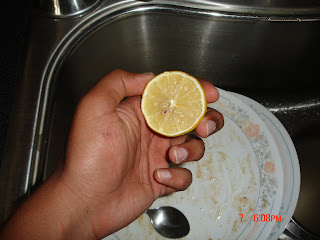Wednesday, September 9, 2009
Tuesday, September 8, 2009
The Hot Zone Questions 1, 2, 3
1] I thought the book The Hot Zone was very interesting. I liked the fact that the book was very detailed and explained everything clearly. Some parts of the book was very gruesome, other then that it was a great book. I think we had to read the book before taking AP Biology because it went into dept about a variety of viruses.
2] a. A virus never really dies. Once the host is dead the virus finds a new host to live and infect.
b. A virus can spread through bodily fluids and through infected air.
c. Once you become infected with a virus you don't know you have it till three to seven days later.
3] The article is relevant to the story in The Hot Zone because they both talk about how a virus spreads and how the virus affects and spreads through monkeys. The article and the book talk about how Ebola started and the origin of the virus.
2] a. A virus never really dies. Once the host is dead the virus finds a new host to live and infect.
b. A virus can spread through bodily fluids and through infected air.
c. Once you become infected with a virus you don't know you have it till three to seven days later.
3] The article is relevant to the story in The Hot Zone because they both talk about how a virus spreads and how the virus affects and spreads through monkeys. The article and the book talk about how Ebola started and the origin of the virus.
Thursday, September 3, 2009
TomK Photos 1-50
http://tomk2009.blogspot.com/2009/09/heterotrophs.html
http://tomk2009.blogspot.com/2009/09/organisms-in-different-kingdoms.html
http://tomk2009.blogspot.com/2009/09/different-types-of-carbohydrates.html
http://tomk2009.blogspot.com/2009/09/homeostasis.html
http://tomk2009.blogspot.com/2009/09/bilateral-symmetry.html
http://tomk2009.blogspot.com/2009/09/atp.html
http://tomk2009.blogspot.com/2009/09/autotroph.html
http://tomk2009.blogspot.com/2009/09/different-biomes.html
http://tomk2009.blogspot.com/2009/09/phloem.html
http://tomk2009.blogspot.com/2009/09/cambium.html
http://tomk2009.blogspot.com/2009/09/niche.html
http://tomk2009.blogspot.com/2009/09/seed-dispersal.html
http://tomk2009.blogspot.com/2009/09/cuticle-layer-of-a-plant.html
http://tomk2009.blogspot.com/2009/09/genetic-variation-within-a-population.html
http://tomk2009.blogspot.com/2009/09/flower-ovary.html
http://tomk2009.blogspot.com/2009/09/anther-and-filament-of-stamen.html
http://tomk2009.blogspot.com/2009/09/xylem.html
http://tomk2009.blogspot.com/2009/08/gymnosperm-cone.html
http://tomk2009.blogspot.com/2009/08/gymnosperm-leaf.html
http://tomk2009.blogspot.com/2009/08/frond.html
http://tomk2009.blogspot.com/2009/08/meristem.html
http://tomk2009.blogspot.com/2009/08/population.html
http://tomk2009.blogspot.com/2009/08/exoskeleton.html
http://tomk2009.blogspot.com/2009/08/ectotherm.html
http://tomk2009.blogspot.com/2009/09/organisms-in-different-kingdoms.html
http://tomk2009.blogspot.com/2009/09/different-types-of-carbohydrates.html
http://tomk2009.blogspot.com/2009/09/homeostasis.html
http://tomk2009.blogspot.com/2009/09/bilateral-symmetry.html
http://tomk2009.blogspot.com/2009/09/atp.html
http://tomk2009.blogspot.com/2009/09/autotroph.html
http://tomk2009.blogspot.com/2009/09/different-biomes.html
http://tomk2009.blogspot.com/2009/09/phloem.html
http://tomk2009.blogspot.com/2009/09/cambium.html
http://tomk2009.blogspot.com/2009/09/niche.html
http://tomk2009.blogspot.com/2009/09/seed-dispersal.html
http://tomk2009.blogspot.com/2009/09/cuticle-layer-of-a-plant.html
http://tomk2009.blogspot.com/2009/09/genetic-variation-within-a-population.html
http://tomk2009.blogspot.com/2009/09/flower-ovary.html
http://tomk2009.blogspot.com/2009/09/anther-and-filament-of-stamen.html
http://tomk2009.blogspot.com/2009/09/xylem.html
http://tomk2009.blogspot.com/2009/08/gymnosperm-cone.html
http://tomk2009.blogspot.com/2009/08/gymnosperm-leaf.html
http://tomk2009.blogspot.com/2009/08/frond.html
http://tomk2009.blogspot.com/2009/08/meristem.html
http://tomk2009.blogspot.com/2009/08/population.html
http://tomk2009.blogspot.com/2009/08/exoskeleton.html
http://tomk2009.blogspot.com/2009/08/ectotherm.html
Tuesday, September 1, 2009
Hot Zone Questions.. Kayla E.
1. I thought the book was really good. At first i was a little nervous that i wouldn't like it. As i started to read it got better and better. I think one of my favorite things baout this book was how detailed it was. It really showed you exactly what was going on. The details helped you paint a picture in your mind.
2. a) When a person has become infected wiht ebola, their cells have been taken over by crystalloids. Crystalliods are diease forming and will make the cells explode eventually. When the book would talk about a person "bleeding out" this is what was really going on inside them.
b) Another fact i learned from this book is that viruses never truely die. When the host they are in die they wait to find a new host to take over.
c) One last fact that i learned which made me a little scared. A viruses can in fact be obtained from breathing it in from the air.
3. The article on malaria relates to The Hot Zone because the two diseases were given to humans from monkeys. In the book the first cases of ebola were found in monkeys back in the late 1960's. The first man to come down with the marburg agent worked with monkeys as living. In the article, it talks about how malaria is caused from a parasite which is common on chimpanzee's.
2. a) When a person has become infected wiht ebola, their cells have been taken over by crystalloids. Crystalliods are diease forming and will make the cells explode eventually. When the book would talk about a person "bleeding out" this is what was really going on inside them.
b) Another fact i learned from this book is that viruses never truely die. When the host they are in die they wait to find a new host to take over.
c) One last fact that i learned which made me a little scared. A viruses can in fact be obtained from breathing it in from the air.
3. The article on malaria relates to The Hot Zone because the two diseases were given to humans from monkeys. In the book the first cases of ebola were found in monkeys back in the late 1960's. The first man to come down with the marburg agent worked with monkeys as living. In the article, it talks about how malaria is caused from a parasite which is common on chimpanzee's.
Subscribe to:
Posts (Atom)



















